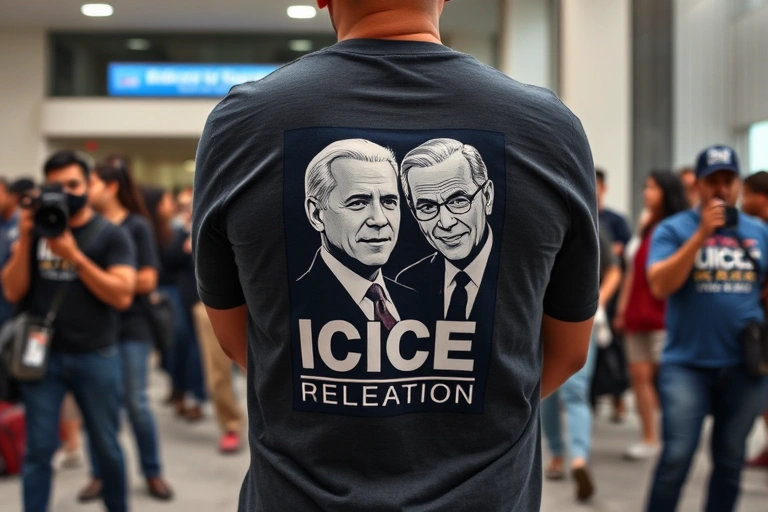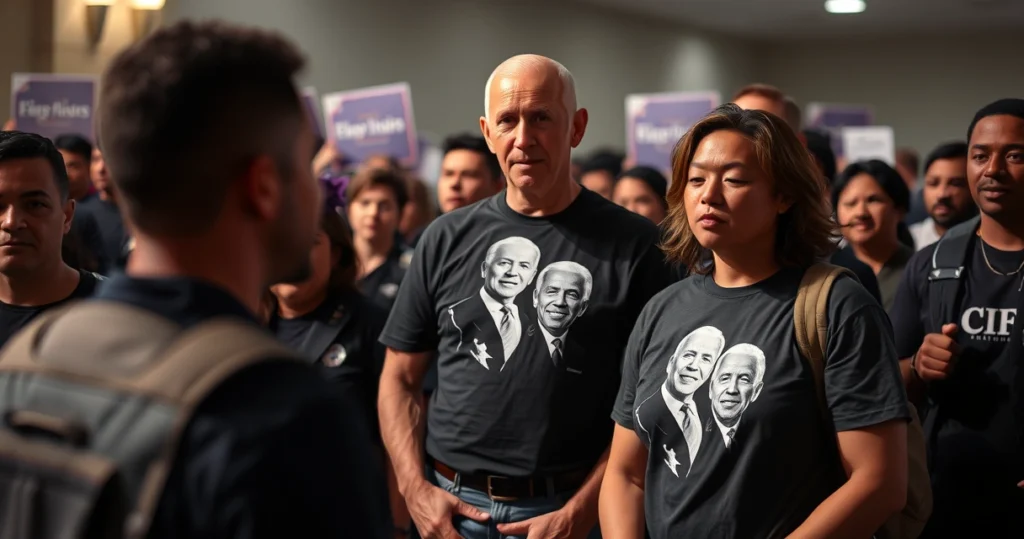Introduction
The landscape of social justice and immigration has been a contentious issue in the United States, particularly in light of the Immigration and Customs Enforcement (ICE) detention policies. These policies have sparked heated debates and protests, illustrating a significant divide in public opinion. The Obama/Biden T-shirt controversy emerged as a focal point in this ongoing immigration policy debate, encapsulating the complexities of political merchandise and its implications in the realm of public reaction to ICE. This article delves into the origins of this controversy, the surrounding public sentiments, and its implications on immigration discourse.

Development Principal
The Obama/Biden T-shirt controversy stemmed from a wave of protests against ICE, which were fueled by growing dissatisfaction with the agency’s detention practices. As immigration policy became a central topic in political discourse, activists began to leverage various forms of merchandise as a means of expression. T-shirts featuring the names of former President Barack Obama and then-Vice President Joe Biden were prominently displayed during protests, serving as a symbolic representation of the hopes and disappointments of many regarding immigration policies.
In recent years, the public reaction to ICE’s detention policies has been characterized by a blend of frustration and activism. Many activists argue that the policies are inhumane, targeting vulnerable populations and contributing to a climate of fear among immigrant communities. This sentiment was palpably felt during protests, where demonstrators donned Obama/Biden T-shirts to critique the perceived betrayal by leaders who once promised reform but were later associated with policies that many view as draconian.
Moreover, the use of political merchandise, such as the Obama/Biden T-shirt, highlights the intersection of fashion, politics, and social activism. In this context, these items became more than mere clothing; they transformed into powerful symbols of resistance and a call for change. As participants in these protests rallied around a common cause, the shirts fostered a sense of unity and collective purpose, amplifying their message against ICE detention policies.
Analysis and Benefits
The political merchandise controversy surrounding the Obama/Biden T-shirts underscores a critical aspect of the immigration policy debate: the role of symbolism in activism. By wearing these shirts, protesters sought to reclaim the narrative surrounding immigration reform. They aimed to remind the public of the promises made during the Obama administration and to hold current and former leaders accountable for their actions and policies.
Moreover, the public reaction to ICE’s detention policies, as expressed through this controversy, highlights the broader implications for social justice and immigration. Activists have used this moment to shed light on the human rights violations that occur within ICE detention facilities. Reports of poor living conditions, inadequate medical care, and the separation of families have galvanized public outrage and mobilized individuals to take action.
Additionally, the controversy has opened the door for discussions about the effectiveness of political actions, such as protests and merchandise campaigns, in influencing policy change. While some may argue that wearing a T-shirt is a superficial act, it can serve as a powerful tool for raising awareness and promoting dialogue about critical issues, particularly in a polarized political environment.
Implementation Practical
For those looking to get involved in the immigration policy debate, understanding the implications of the Obama/Biden T-shirt controversy is vital. It is essential to recognize that activism can take many forms, and while wearing politically charged merchandise is one way to express dissent, there are myriad other avenues for engagement. Individuals may choose to participate in community organizing, engage in discussions about immigration reform, or support organizations that advocate for social justice and immigration rights.
Furthermore, those interested in making a tangible impact should consider attending protests, signing petitions, and contacting their representatives to voice their concerns regarding ICE’s detention policies. Social media campaigns can also be effective in amplifying the message and broadening the reach of activism. Utilizing hashtags related to the controversy can help connect like-minded individuals and foster a sense of community among advocates for change.
Ultimately, the Obama/Biden T-shirt controversy serves as a reminder of the complexities involved in social justice and immigration discourse. It emphasizes the importance of continued advocacy and the need for comprehensive reforms that address the root causes of immigration issues while respecting human rights and dignity.

Frequently Asked Questions
What are ICE’s detention policies, and why are they controversial?
ICE’s detention policies involve the apprehension and detention of individuals suspected of being in the country illegally. These policies are controversial due to reports of inhumane conditions, family separations, and the targeting of vulnerable populations, which many consider to violate basic human rights.
How did the Obama/Biden T-shirt controversy arise?
The controversy arose during protests against ICE, where activists wore T-shirts featuring Obama and Biden’s names to express disappointment over their administration’s immigration policies and to highlight the perceived betrayal of their promises for reform.
What role does political merchandise play in activism?
Political merchandise, such as T-shirts, serves as a visual representation of activist sentiments. It helps to unify protesters under a common cause and can spark conversations about critical issues, furthering awareness and engagement in social justice movements.
How can individuals get involved in the immigration policy debate?
Individuals can engage in the immigration policy debate by participating in local protests, supporting advocacy organizations, signing petitions, contacting elected officials, and utilizing social media to raise awareness about immigration issues.
What are some effective ways to raise awareness about ICE’s detention policies?
Effective ways to raise awareness include organizing informational events, sharing personal stories, utilizing social media campaigns, creating educational materials, and collaborating with local organizations focused on immigration rights and social justice.
Conclusion
The public reaction to ICE’s detention policies, particularly as exemplified by the Obama/Biden T-shirt controversy, reflects a broader discourse on social justice and immigration in the United States. This controversy not only highlights the frustrations of activists but also serves as a reminder of the power of political merchandise in amplifying voices and fostering solidarity among those advocating for change. As the immigration policy debate continues, it is crucial for individuals to remain engaged and informed, striving for a more just and humane approach to immigration in America.







